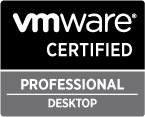DatacenterDynamics Converged recognises the need for cross-disciplinary cooperation in the data centre. From site selection and construction to outsourcing strategy and regulation through to how best to deliver the infrastructure for your mission-critical infrastructure – DatacenterDynamics Converged reflects the interaction of the following three elements for optimum data centre operation and management.
The DatacentreDynamics census revealed an industry second-to-none in terms of development. The high level of sophistication and maturity in the market has shifted the emphasis from facility and investment expenditure to concerns of efficiency; data centre monitoring, IT optimisation and the increased adoption of outsourcing models have moved centre stage.
The Italian conference is held in Milan on Jun, 7th. More information in the official page.
This year I’m one of the speaker, with this session:
- Title: “Using server virtualization to optimize the consolidation and reduce the power consumption of the datacenter”
- Abstact: Server consolidation is a way to reduce the number of servers and optimize the datacenter’s power consumption and the cooling requirements. By adding the server virtualization we can achieve abetter consolidation (and could also combine physical consolidation, like using blade servers) and obtain great level of reduction in both cooling and power consumption (and this is only one of the several benefit of virtualization). Of course additional systems could be needed, like shared storage, but we can make several considerations and see that still there are some benefit. We will analyze typical server consolidation in a virtual environment (ad also we will give some information about the desktop consolidation) to make some estimation of how datacenter consumption could be optimized. Also we will discuss on some techniques available in virtual environment (like VMware DPM) to optimize power requirements during low usage of the datacenter.













